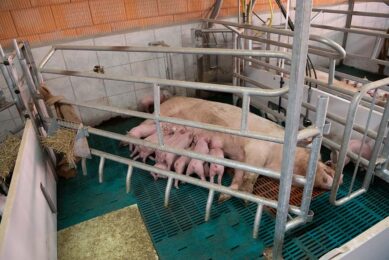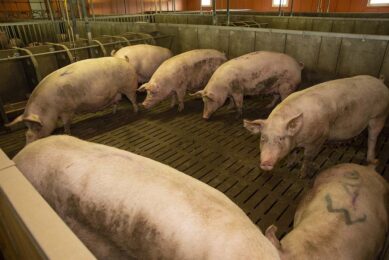New source of info on farrowing sows, piglets
The new set of guides ‘Zoom on… the peri-partum phase’ is the result of work carried out by Lallemand Animal Nutrition on commercial farms.
The Zoom on… concentrate on specific parameters regarding the management of farrowing sows and their piglets. This data may be descriptive, explanatory or exploratory; but in no case does it claim to be exhaustive or to convey absolute truth.
The aim of this work and of the publication of these manuals is therefore to provide a very practical and concrete view of a particular pig farm. It will enable us to pinpoint and assess certain problems encountered on an average farm of 400 sows.
Conclusions & solutions
In this sense, it may well be able to draw conclusions or find solutions; but the results of this work will also enable pig producers to discover areas that could be worked on, or thinking aids which may offer a new perspective or new ideas for handling sows and their litters.
The set is made up of five guides, focused on the peri-partum period, each one is dedicated to a specific item:
Focus on farrowing
Observations and measurements carried out on 67 Topigs genetics sows at a standard breeding-fattening farm provide the basis for this chapter’s illustrated description of specific farrowing warning signs. In considering these signs, and characterising the farrowing conditions, we highlight the characteristics of this phase and certain phases which require the breeder’s attention.
A close look at farrowing
The aim of this chapter is to describe and quantify all parameters for farrowing on a farm (450 sows, breeder/fattener, Topigs genetics for the females, Maxter for the males) in order to define the profile of an ‘average’ farrowing process.
Portrait of a stillbirth
This chapter draws on the observation and monitoring of 1,183 piglets, enabling the notion of immaturity to be defined from several diff erent angles. This enables us to recognise immaturity from a morphological point of view, to explain it from an anatomical point of view, and then to evaluate the zootechnical consequences of this growth retardation.
Profile of an immature piglet
This chapter draws on the observation and monitoring of 1,183 piglets, enabling the notion of immaturity to be defined from several different angles. This enable us to recognise immaturity from a morphological point of view, to explain it from an anatomical point of view, and then to evaluate the zootechnical consequences of this growth retardation.
Objective vitality
Based again on the study carried out on the pig farm, this section aims to address the following points: definition and measurement of vitality, impacts on the piglets and overall litter performances and lastly, consideration of upstream factors which influence the vitality of new-born piglets.
Related websites:
• Lallemand Animal Nutrition
• Topigs











